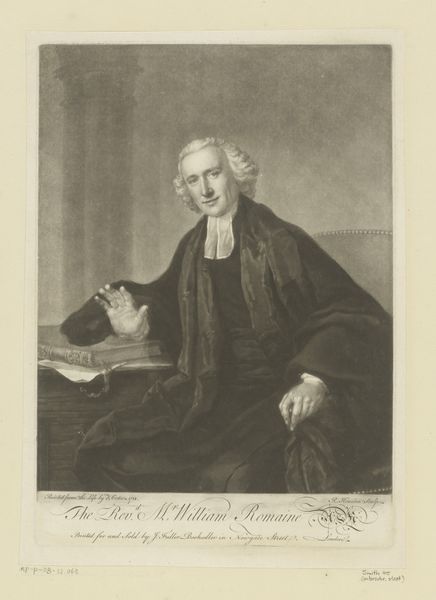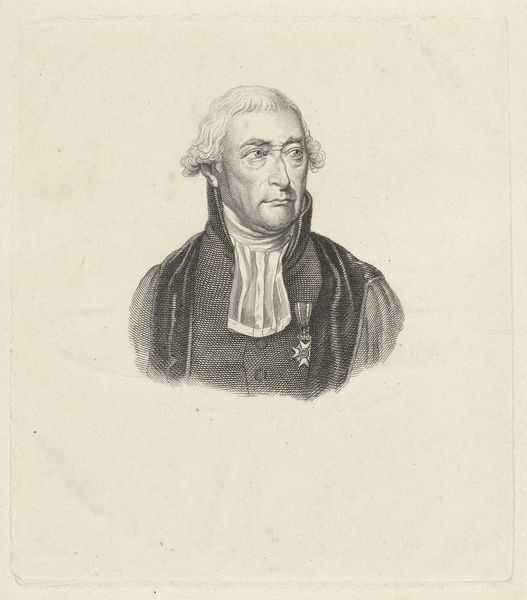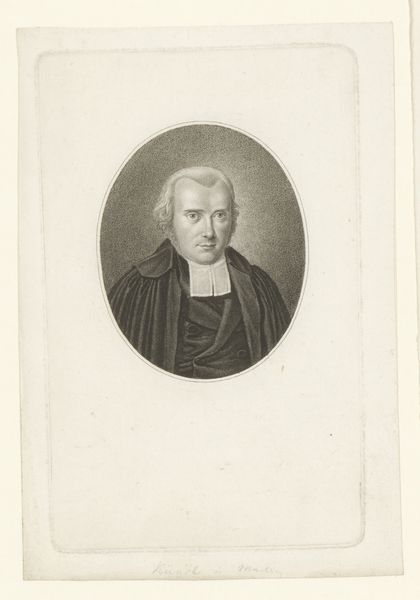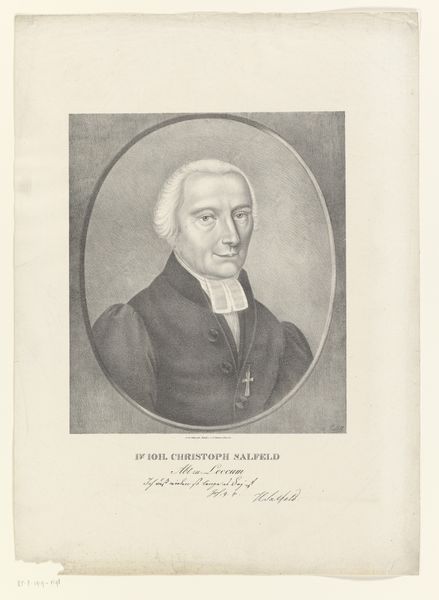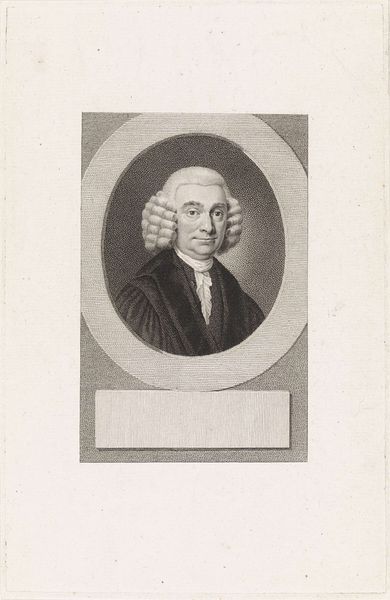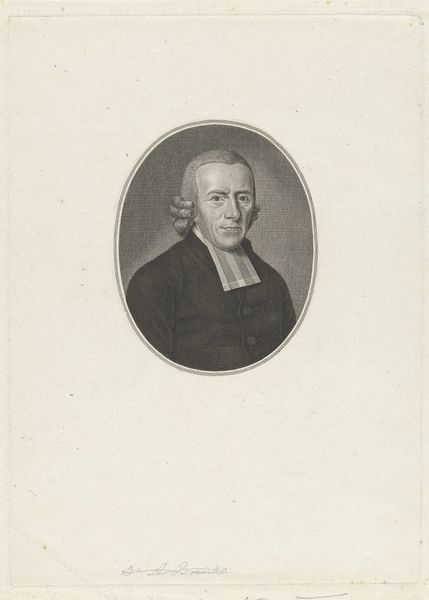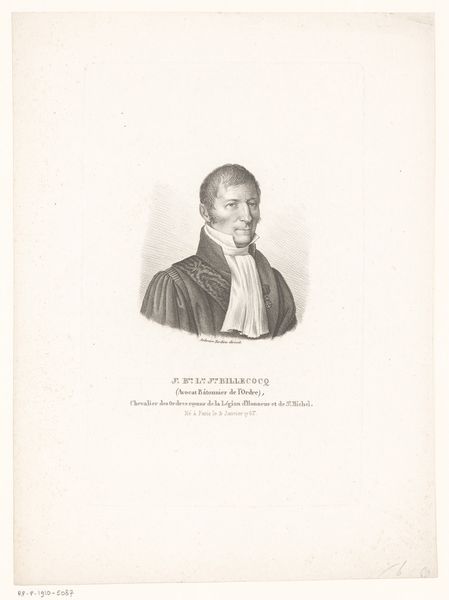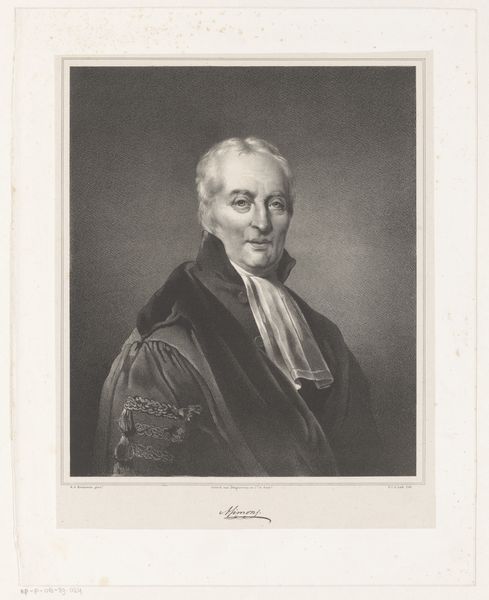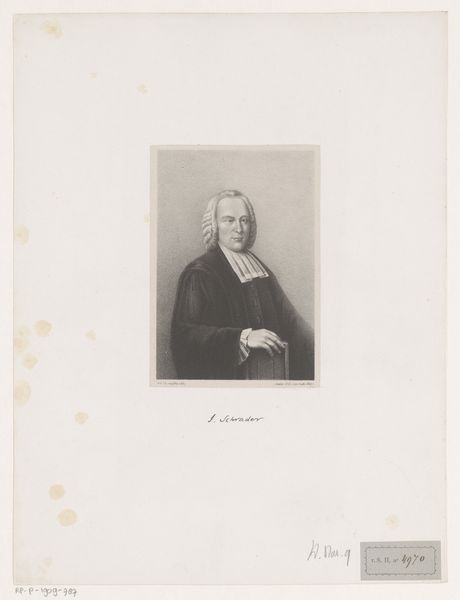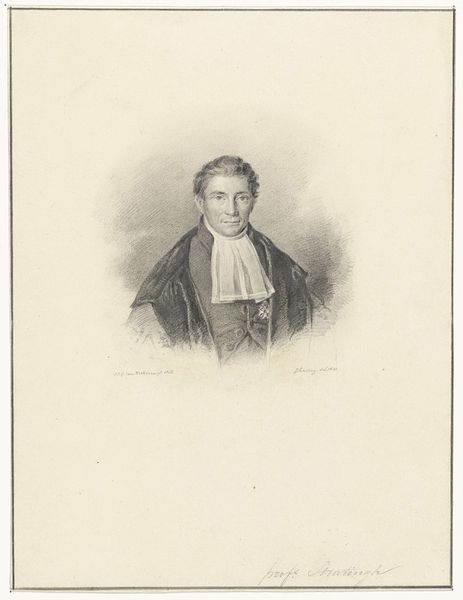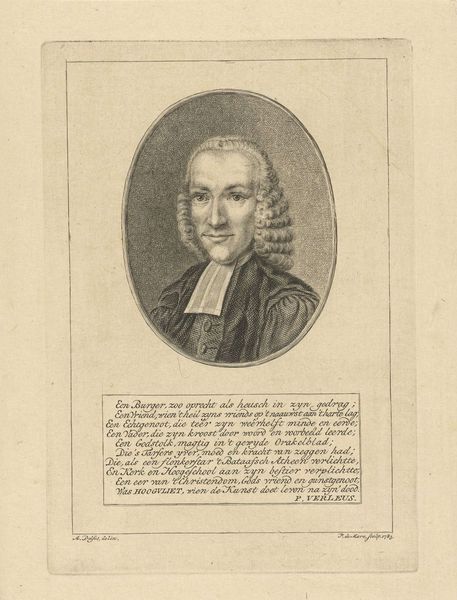
Portret van de hoogleraar Evert Jan Thomassen a Thuessink 1807
0:00
0:00
ludwiggottliebportman
Rijksmuseum
graphite, engraving
#
portrait
#
neoclacissism
#
charcoal drawing
#
pencil drawing
#
graphite
#
portrait drawing
#
academic-art
#
graphite
#
engraving
Dimensions: height 408 mm, width 328 mm
Copyright: Rijks Museum: Open Domain
Curator: Looking at this artwork, I'm struck by a sense of formality, almost austerity. There's something about the pale tones and severe composition that feels very… distant. Editor: Yes, and yet consider that what we are observing is a printed image, an engraving, created circa 1807 by Ludwig Gottlieb Portman. The artwork portrays Evert Jan Thomassen a Thuessink, who was a professor. Notice how Portman leverages the reproducible medium of engraving to distribute a certain image and status. Curator: Absolutely, the social role is palpable. What is most fascinating is the tension between the very reproducible engraving medium with its reliance on the industrial, alongside the depicted aristocratic identity. The tight rendering and clean lines mimic a kind of classical precision. It speaks volumes about how class distinction could be, quite literally, 'printed'. Editor: Precisely, while I appreciate the Neoclassical style's emphasis on order, what draws me in are the subtle nuances achieved solely with line work—the professor's facial expression which holds both seriousness and a hint of weariness. It speaks of the demands of his profession, don’t you think? Curator: Perhaps. Or it speaks to the constraints imposed on artists at this historical juncture. Consider the implications that the professor most likely paid for this, or subsidized it. We could discuss the effect that this might have on Portman’s interpretation and depiction… a sort of… ‘have to please’ circumstance? Editor: You're making me question everything, which is, admittedly, wonderful! All joking aside, it makes one wonder about the physical process of engraving as well— the labor involved in creating such an image through painstaking detail, essentially democratizing and preserving his likeness in print for circulation. It's powerful to think of the role each impression served. Curator: Yes! Thinking of these details emphasizes how prints allowed art, specifically portraits and history paintings, to be distributed throughout the bourgeois. It shaped not only identity, but taste. What does this portrait teach about this era of cultural production and consumption? Editor: That question is what will haunt me long after we conclude here. But for now, this image really underscores the impact art and distribution have. The act of capturing the gaze of Professor Evert Jan Thomassen A Thuessink makes you realize it transcends simple historical documentation, right? Curator: I completely concur. The work makes one reflect deeply on its material conditions as a lens into society at large.
Comments
No comments
Be the first to comment and join the conversation on the ultimate creative platform.


